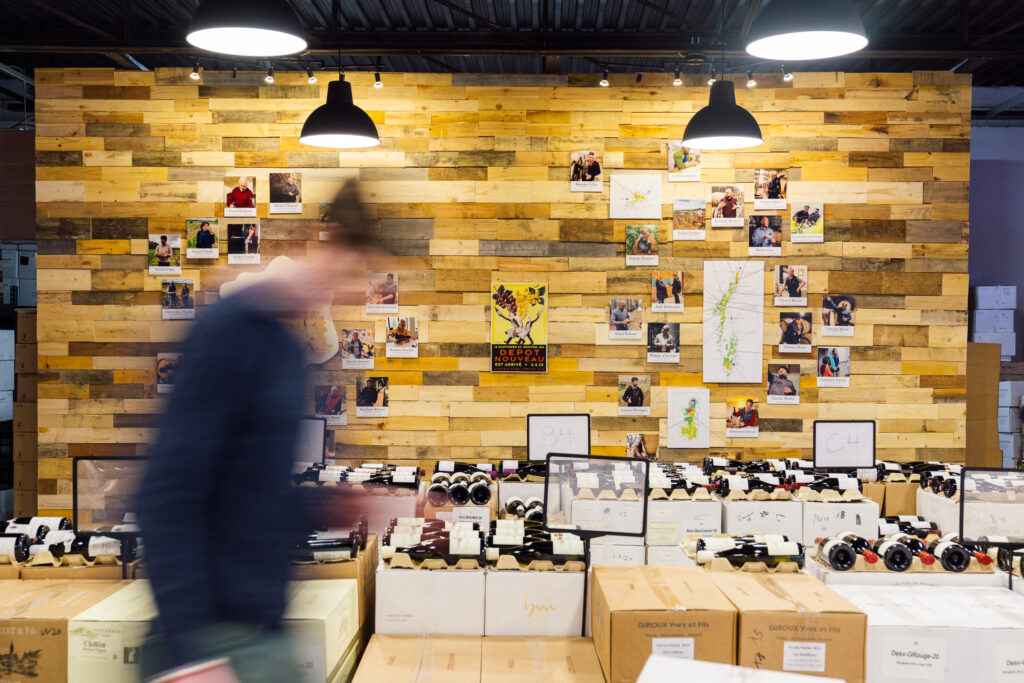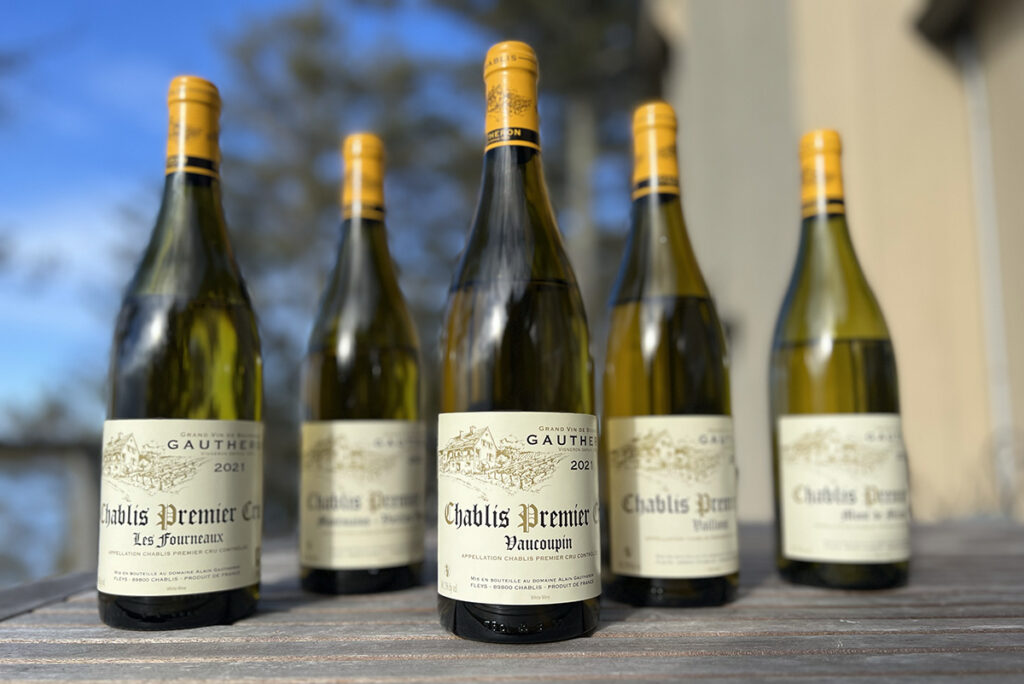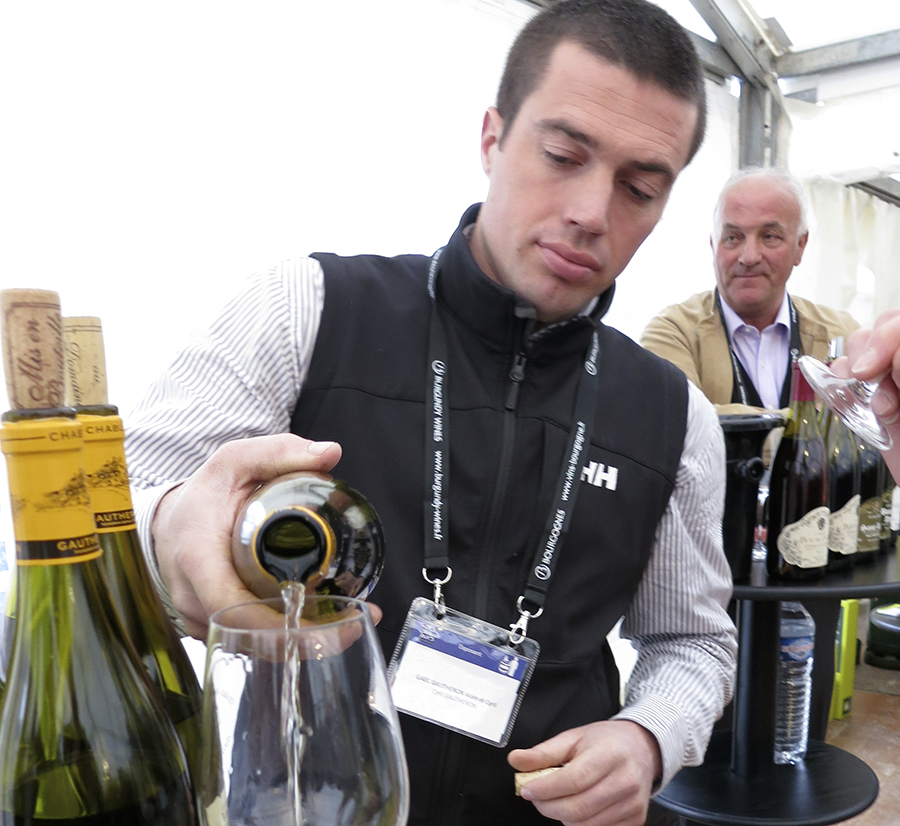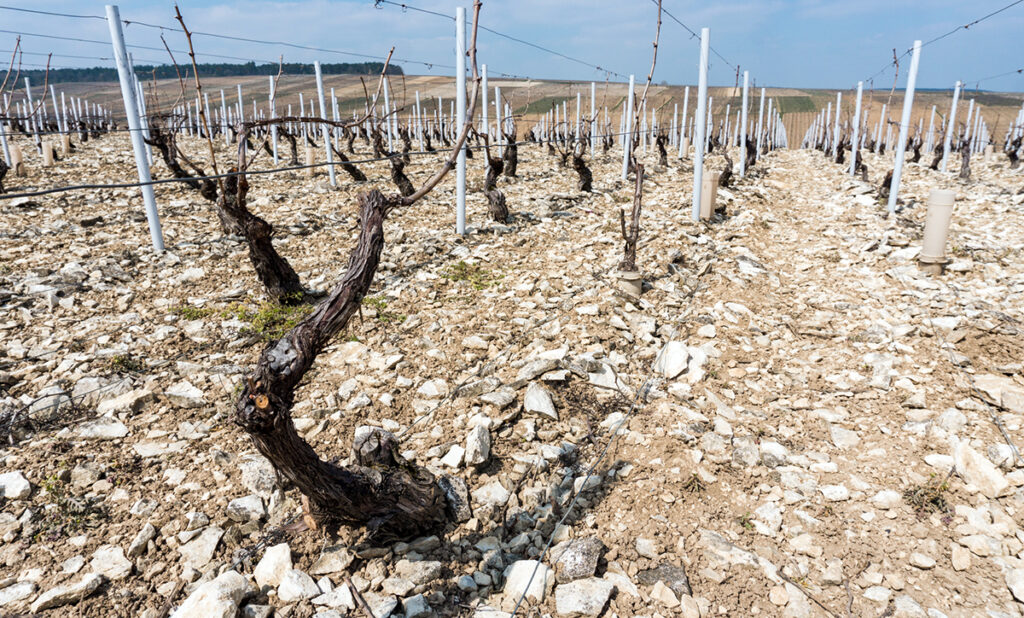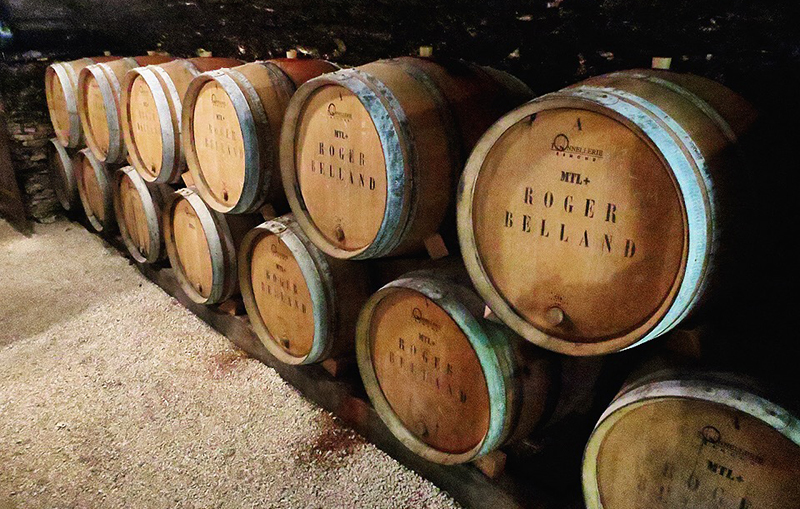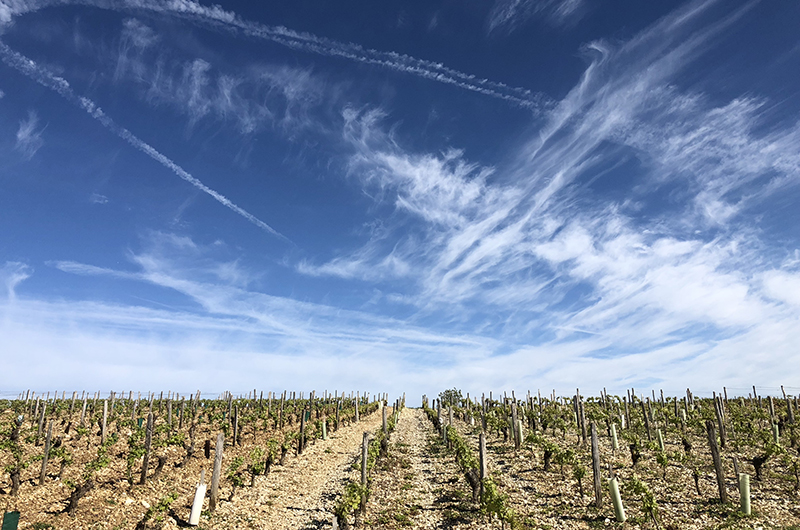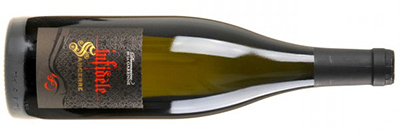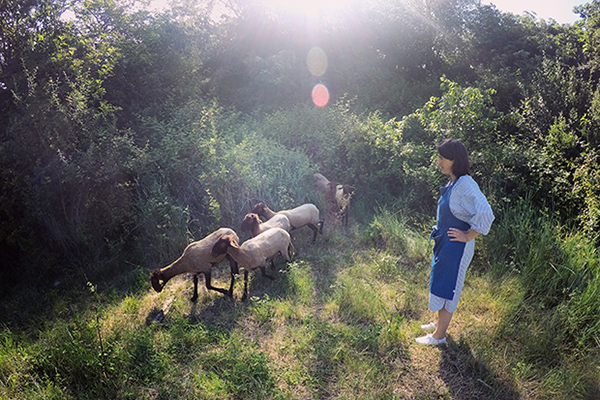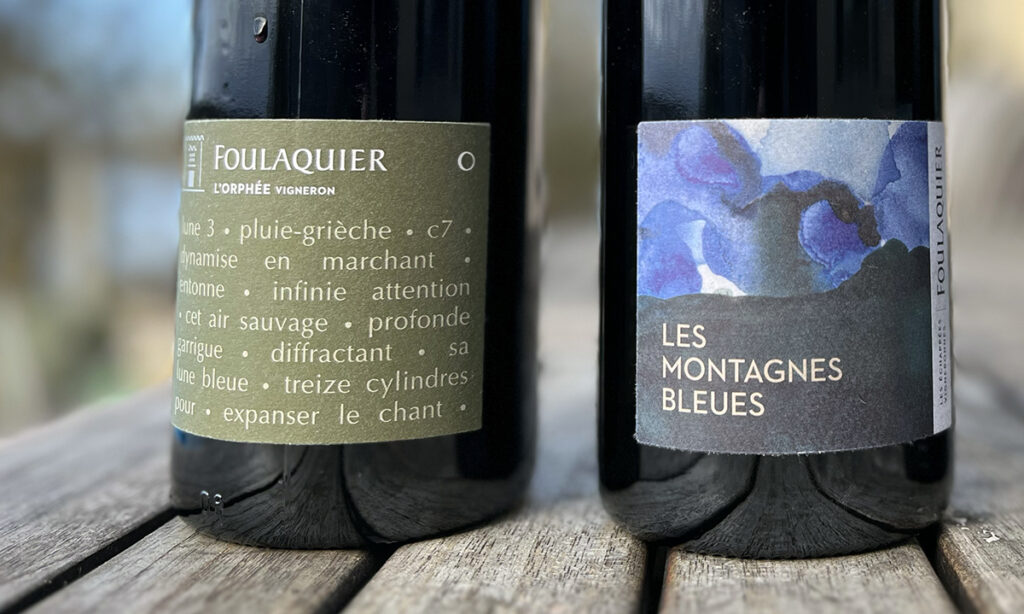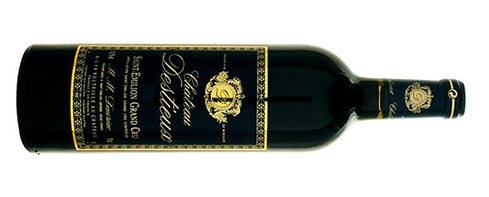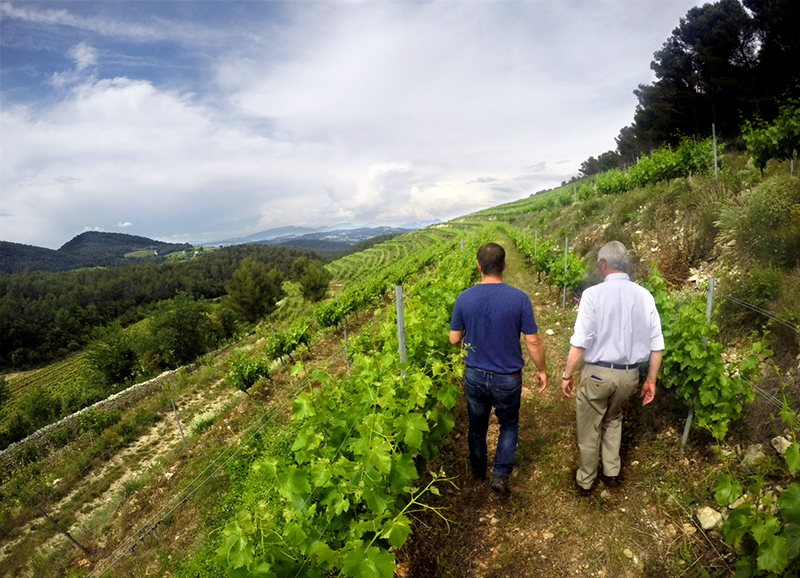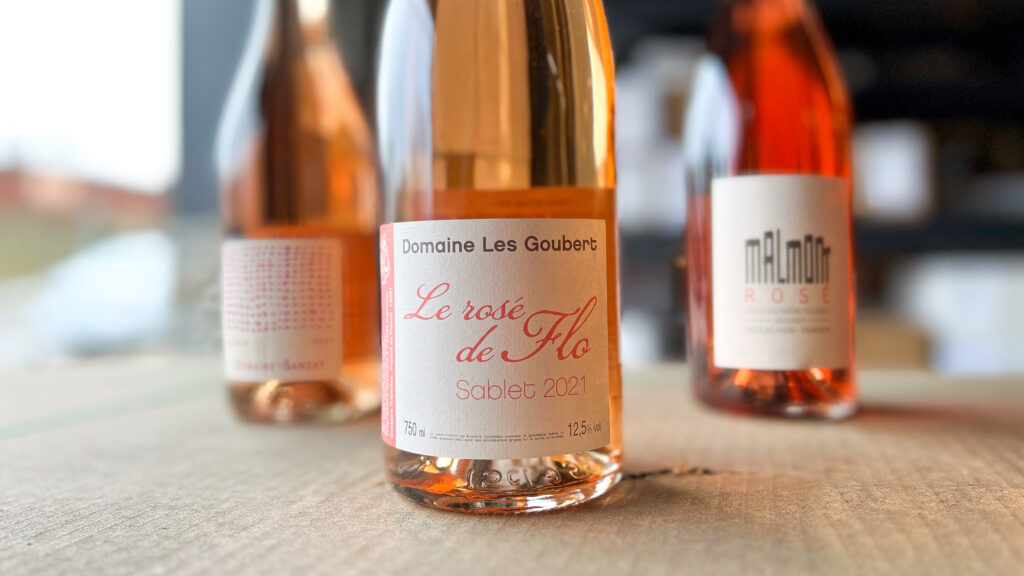In France, la taille, the annual exercise of pruning dormant vines in winter, is largely complete. It’s not exactly the same as it always has been, though, because vignerons have begun to delay the taille. Somewhat counter-intuitively, a warming climate increases rather than decreases the risk of frost damage to buds and shoots, which are at their most vulnerable shortly after bud break. Many vignerons now delay pruning in the hope of kicking off the vines’ vegetative cycle later, thus reducing the likelihood of exposure to the early spring frosts. It’s one of their many ways of coping with a changing climate. We’re looking forward to getting back to France later this month, even though we will once again be visiting at the tensest time of the year, with the risk of damaging frosts near its height. But it’s also a good time for tasting, with most of the 2021s in the bottle and chances for a good first look at many 2022s as well. And of course it’s always a pleasure to share some meals with friends and to see what’s new in the old haunts. Burgundians have breathed out a bit with the abundant 2022 vintage now snug in their cellars. After four consecutive vintages of crops ranging from small to smaller, the barrel rooms are fuller than they’ve been in a while. And while most 2022s won’t come on line until next year, we hear a sense of relief from our vigneron friends. March Futures includes Burgundy, of course, with a batch of Chablis premier cru and some opportunities to restock some excellent 2020s at Futures pricing. In addition, we visit the right bank of Bordeaux, the hills of the Languedoc and the valley of the Loire. Finally, rosé fans will have the opportunity to stock up on 2022 rosé. We hope there will be something here for every taste and budget. If you find anything of interest, be sure to submit your orders, in case or half-case lots, by the Order Deadline of Sunday, March 19, 2023. We will place orders for the wine immediately thereafter. JUMP TO VIGNERON
Gautheron
Burgundy Redux
Garenne
Foulaquier
Dauriac
Rosés
March Futures
Order Deadline: 3/19
Domaine Gautheron
Fleys, Chablis, Burgundy
In a Burgundy where investment markets have pushed up prices dramatically for the biggest names, prices increase for less famous producers as well. Yet within Burgundy, Chablis remains a haven of value. Quality among the best Chablis producers is very high, and we are delighted to have two of them in our portfolio. The Gautheron family’s style tends toward the classic Chablis profile; little or no oak influence and beautiful fruit balanced with lively acidity. Jasper Morris MW, author of the much-praised Inside Burgundy, covers Chablis in great detail in his 800-page second edition. He has just released a report considering the 2021 vintage, and in it he had much praise for Cyril Gautheron’s wines: “I must say that Cyril Gautheron’s wines are climbing up my table of Chablis producers.” During 2021, frosts slashed volume in Chablis as in the rest of Burgundy, and so quantities are limited. Gautheron has just released the premier crus from the 2021 vintage, and we are pleased to offer a choice from five of them here. Cyril sent us samples to taste, and we entirely failed to winnow them down at all – all five were terrific and unique, and so we’re including the lot. Chablis is a compact wine region: the town and its best vineyards are all clustered together along the left and right banks of the river Serein, which runs right through the town. The right bank (where all the Grand Crus lie together) has more generally southern exposures, and its vineyards tend to riper fruit profiles, “typically more yellow than white in style,” as Morris puts it. The left bank tends to white flowers and fruit, and the classic Chablis marker of steely minerality comes readily into play there. Vaucoupin premier cru has developed a strong following over the years among Ansonia buyers. It is on the right bank and its southern exposure provides good ripeness, but from the pitch and orientation of the terroir there is also a dose of the left-bank minerality and crispness. We find Vaucoupin very versatile, and regularly choose to accompany all sorts of seafood and chicken dishes. Morris gave the 2021 high marks, praising its “very Vaucoupin chiseled white fruit.” We found it round and ample, and think that its fans will be glad to add the 2021 vintage to their cellars. Fourneaux premier cru is another right bank premier cru and lies just down the slope from the Gautherons’ winery in the hamlet of Fleys. There’s more clay in the soils here, which adds some power, and the name (meaning “oven”) refers to the warm, sunny valley where sits the domaine. The wine is raised entirely in tank, and lacks for nothing in the way of complexity. The Fourneaux 2021 is delightful, with white more than yellow peach in a pleasantly chalky nose and a particularly nice balance in the mouth. It has an elegant, unctuous concentration that persists on the palate and finishes long. With intense fruit and a nice dollop of sucrocité, this is sure to be a crowd pleaser – perfectly balanced Chablis. Mont de Milieu generally yields one of the most powerful premier crus in Chablis. It faces full South, and the vines from the vignerons in Fleys tend to be the fleshiest in the group. Morris liked the “pretty pale lemon color,” and took particular note of the “fresh apricots” in its fruit. We found it considerably riper than Fourneaux, but with excellent zip and persistence. . It is fleshy and ample, though not at all lacking for supporting acidity or minerality. It’s perhaps more stoic and less friendly than Fourneaux, but sometimes that’s just what you want. On the left bank, we’re pleased to offer two new premier crus from Gautheron: Vaillons and Montmains. Vaillons premier cru lies on a slope parallel to Montmains on the left bank. Gautheron’s Vaillons 2021 is round and full on the palate despite the vintage’s relative freshness. Morris gave it 90-93 points, with these comments: “Very pale colour, with impressive tension on the nose. The stones are there and a bit of flesh, too, pure and typical with the usual dry finish. Old vines here. Really very long.” We found this wine terrific, and of an entirely different character than the right bank cuvées. There’s more of a savory feel to the wine, with minerals and oyster shells mixing with dry apple fruit. Finally, Gautheron has a patch of very old vines in Montmains, where the soils favor classically profiled Chablis that relies on clarity of fruit and an intermingled mineral line. Morris had his highest praise for Gautheron’s Montmains 2021, awarding 92-94 points and remarking “well done,” “very typical left bank fruit,” and “pure and even quite intense white fruit with a lime citrus finish.” We found a surprisingly ample body (almost buttery) accompanied by lots of supporting acidity, suggesting terrific complexity and very good aging potential. This is a lovely, elegant wine – the most sophisticated of the bunch – and you won’t need to rush to drink it up.
GAUTHERON Chablis 1er cru “Vaucoupin” 2021: $395 Chablis 1er cru “Vaillons” 2021: $395
(case prices)
Chablis 1er cru “Fourneaux” 2021: $395
Chablis 1er cru “Mont de Milieu” 2021: $450
Chablis 1er cru “Montmains” VV 2021: $425
Burgundy Redux
Santenay, Meursault, Pouilly-Fuissé
A crowded shipping container last year forced us to leave several lots of wine back in Burgundy. We debated releasing the reservation and just sticking with the wine we could fit, but decided given the excellent vintages and lack of supply, we’d ask the domaines to hold for later pickup. And now, like a Christmas present you forget to open until March, we’re thrilled with our decision. The 2021s from Belland, Boyer-Martenot, and Giroux will be in the July, October, and May Futures issues respectively; but we’re delighted to re-offer three 2020s and a 2019 from these terrific producers. For readers who have already bought these wines and are no doubt enjoying them today, here’s a chance to top up your supply. For those who missed the boat last time, we offer a rare Burgundian second chance. Roger Belland produces a dozen cuvées from around the southern end of the Côte d’Or, including from famous vineyards in Chassagne, Puligny, and Volnay. But it’s the wines of his hometown Santenay that often appeal to us most. Belland’s style is plump and juicy, with approachable tannins and beautiful aromatics. In 2020 his fruit-forward friendly style is even more on display than usual, and these are some of the most drinkable Belland reds we can remember. We opened both last week just to check in, and found them open and just delicious. The Belland Santenay 1er Gravieres 2020 is fresh and lively, with exquisite floral notes and a fine mineral nose of stones and roses. The mouth is crisp and fresh with excellent length. There’s classic juicy 2020 fruit, but it’s not a bit overripe – the stony fruit is perfectly supported by careful tannins. This is floral and beautiful today, but the mineral intensity should carry it easily for years to come. The Belland Santenay 1er Commes 2020 is darker and richer, but no less charming. There’s more violet and plum in the nose, with a pretty mouth that’s long and intense. This has more shoulders and a longer finish than the Gravieres, and will similarly reward but not require cellaring. Both of these are simply delicious red Burgundies that are hard to put down. We’re also pleased to re-offer what we consider the finest Aligoté we’ve ever had: the 2020 from Boyer-Martenot. Vincent Boyer is an innovative winemaker making extraordinary wines in Meursault and Puligny-Montrachet, but his entry-level cuvées are among the best values in our cellar. His 2020 Aligoté in particular is a triumph; showing a beautiful nose of cortland apples, buttered toast and chalk. With its mild acidity and easy, fresh, lightweight mouthfeel, it’s worlds away from the aligoté of yesteryear. William Kelley found it “seamless…satiny and racy, with a fleshy core of fruit.” Burghound gave it his “Outstanding” rating (a rarity for a wine of its humble level), writing of the wine’s “delicious and vibrant middle-weight flavors” with “very good density and a refreshing salinity.” An astonishing bargain at under $17/bot. Finally, we’re reoffering a 2019 Pouilly-Fuissé from one of last year’s most exciting discoveries. We discovered Sebastien Giroux in part based on a tasting note from William Kelley, who described the wines as “supple, pure, and charming.” Our visit and tastings supported Kelley’s assessments, and recent tastings at the Newton Depot have even further confirmed our initial impressions – Giroux is a gem, and a truly exciting addition to our cellar. We’re re-offering his terrific 2019 Pouilly-Fuissé “Raidillons,” which Kelley called “rich and layered,” “[u]nwinding in the glass with notes of pear, white flowers,… and mint,” awarding 90-92 points. The bottle we opened this week was refined and delicious – a terrific mix of fruit and minerals here, offered in a racy style. With no apparent oak, it’s clean, fresh, and very long. The vibrant fruit and lythe shape are remarkable for a wine of its level. We can’t wait to see what else Giroux has in store for us, but he’s off to an awfully impressive start.
BURGUNDY REDUX Belland Santenay 1er cru rouge “Gravières” 2020: $450 Boyer-Martenot Aligoté 2020: $195 Giroux Pouilly-Fuissé “Raidillions” 2019: $295
(case prices)
Belland Santenay 1er cru rouge “La Comme” 2020: $450
Domaine de la Garenne
Sancerre, Loire Valley
Sancerre is the world capital for Sauvignon Blanc. In recent decades the grape has found a home in other latitudes and longitudes — in places as diverse as New Zealand and Washington State — but Sancerre still defines the standard. This chiseled, precise, and grapefruit-driven grape shows its best in the vineyards that surround that picturesque village. Not that all Sancerre is the same. The town sits high on a hill, and depending on the route taken down from it, there are variations in terroir that show up on the palate. Our source in Sancerre is the Domaine de la Garenne, and in Sauvignon they produce three distinct wines, each with its own charms. We presented the regular cuvée in our post last Sunday. Domaine de la Garenne Sancerre is the most popular white in the Newton Depot, a beautifully balanced blend of its elements. There is plenty of fresh grapefruit in an ample, mouthfilling wine, with added notes of minerals and a lively mouthfeel. The regular Sancerre is a very versatile wine, good to have around throughout the year, and it matches up readily with all sorts of fish, shellfish, fowl and fresh cheeses. A small valley stretches out from the base of Sancerre’s hill up toward Chavignol, home to the much-celebrated goat cheese “Crottin de Chavignol” (itself a wonderful match for Sancerre). Along the valley there is a famous stretch of clay-limestone terroir called the “Monts Damnés.” It’s steep and imposing, and it consistently generates top-rated Sancerre. Domaine de la Garenne has its own special terroir along that same slope, right next to the Monts Damnés: Les Bouffants, whose grapes they vinify separately. Sancerre “Bouffants” 2022 offers a chalky and focused grapefruit nose. There’s more intensity in the fruit and more clearly mineral notes mixed in. The wine persists well on the palate and the finish is longer. Les Bouffants costs a few more dollars a bottle, but lovers of the Sancerre terroir will find it worth the difference. Infidele 2020 is among the best Sauvignon you can buy anywhere. Take the concentration and intensity of Bouffants up a notch or even two more, and you have this wine. It feels very substantial in the mouth, packing in the pure, dense fruit into something very concentrated, yet the wine retains its crystalline character. Subtle notes of gunflint from the flint nodules scattered all through its vineyard soils add to its character. The Domaine made none of this wine in 2021, so we were delighted to learn there’s a little 2020 left. We think it is even better now than it was last year. Just as Bordeaux’s whites are often overshadowed by the reds, so is Sancerre rouge overshadowed by the whites. Yet Garenne’s Sancerre rouge is a lovely and affordable glass of Pinot Noir, and while it will never compete with the great red Burgundies of the Côte de Nuits, it holds its own against plenty of Bourgogne-level Pinot Noir and similar wine from around the world. At the same price as “Les Bouffants,” the Sancerre rouge 2021 offers a particularly good value. The nose is expressive, with dark, pretty wild strawberry fruit overlaid with a bit of earthiness. The texture is impressive, with pleasant freshness and just enough ripe tannin to give the wine substance. An excellent middle-of-the-week pinot.
GARENNE Sancerre blanc 2022: $275 Sancerre rouge 2021: $295
(case prices)
Sancerre “Bouffants” 2022: $295
Sancerre “Infidèle” 2020: $395
Mas Foulaquier
Pic-St-Loup, Languedoc
Our friends at the Mas Foulaquier continue to turn out delicious, complex, vibrant wines from the natural end of our portfolio’s spectrum. Given some of the ultra-funky (flawed?) natural wine that passes for finished product out there today, we’d put Foulaquier’s wines in the “earthy but clean” camp. You’d never mistake these for polished producers like Goubert or Gros, but when we open them at our warehouse tastings in Newton they draw acclaim from hipsters and old-school collectors alike. March Futures wines are set to arrive in May, and the lineup from Foualquier is perfectly timed for the arrival of spring/summer. As the warm weather draws us outside into the natural world, these vibrant, low-intervention wines are the perfect accompaniment. Located in Pic-St-Loup, among the best terroirs in the Languedoc, Foualquier crafts delicious red blends by employing careful biodynamic viticulture. Their wines channel the region’s wildness into exuberant, fruit-and-earth mixtures that are always complex and always polished. We have two ideas this year – an old favorite and a new discovery. First, a new cuvée: Montagnes Bleues. This is pure Grenache raised in concrete tanks — a crisp, vibrant, unadulterated take on the grape. At 12.5% alcohol, the 2019 bursts with beautiful strawberry fruit, hints of grenache smoke, and notes of garrigue and lavender. The mouth is crisp and crackling with delicious, nicely balanced tannin – the shape of a Loire Valley Cabernet Franc wrapped in a Provencal package. After a long gray winter we plan to spend a lot of time on the back patio this spring, and a cooled glass of this will not be far from our chair. Second, an old favorite – Orphée, the 50/50 blend of Grenache and Syrah. The 2020 Orphée is very representative of the vintage – bursting with juicy ripe fruit and tremendous freshness. Fans of 2020 Red Burgundies will recognize a throughline running south to the Languedoc in this wine. It’s dark and mouthfilling but at 13.5% alcohol remains fresh and very vibrant. The nose shows cassis and raspberry, low funkiness, and hints of thyme and earth. The mouth is sturdy and delicious with southern tannins dripping in fresh, inky fruit. Pour this to accompany grilled meats.
FOULAQUIER Montagnes Bleues 2019: $235
(case prices)
Orphée 2020: $295
Vignobles Dauriac
Saint-Emilion, Bordeaux
It’s been a while since we’ve been able to squeeze a trip to Bordeaux into our tasting schedule in France, so we generally taste Christian Dauriac’s three wines from bottle samples. We hope to return in person soon, but in fact this is an address where bottle tasting has its advantages. Dauriac maintains an extensive back catalog of his wines from the last decade, and it’s a real treat to sample wines with a few years of age on them. A bit of extra time in the cellar benefits most wines, even simple ones. There’s nothing simple about Dauriac’s three properties, though – Clemence, the delicious and ageworthy Pomerol; Destieux, the famous St-Emilion Grand Cru Classé; and Montlisse, Destieux’s little brother, which was elevated to Grand Cru Classé itself just last year. All three are terrific wines made in the spirit of classic Right Bank Bordeaux. They’re all Merlot dominant, with a bit of Cab Franc and Cab Sauvignon mixed in. This year we’ve chosen our favorite vintage from each. First, the 2017 Montlisse. We offered this last year, and quickly wished we had bought more – so we’re doing so now, and invite you to join us. Montlisse is always a user-friendly St-Emilion, and 2017 is particularly so. From a vintage without the concentration or tannin of those on either side, it’s expertly balanced between earth and wood and fruit in the mouth. The nose is beautiful, showing violets, mahogany, tar and leather. The mouth is long and delicious with a velvety structure that has clung to some of its refined tannins. Neal Martin gave 92 points, finding “an intense, well defined bouquet” with “supple tannins” and a “lovely caressing finish. Excellent.” This is a startlingly good deal under $30 – a perfect weeknight steak red. (We expect the prices to rise soon with the elevation in classification.) Dauriac’s flagship wine is the Chateau Destieux, a Saint-Emilion Grand Cru Classé. Destieux is a regal wine, a marriage of intensity and polish. We loved the 2016 when we tasted it this year, and found it beat out 2015 and 2019 handily. The nose is rich and gorgeous with notes of plums and strawberry jam, alongside toast and fine gravel. The mouth is beautifully detailed and quite fine, with a long, silky finish. Antonio Galloni awarded 94 points, writing “this is a terrific showing… a decidedly flamboyant Saint-Emilion endowed with superb richness and tons of sheer appeal.” At $75/bot through Futures it’s probably not your new house red, but given prices these days at top Bordeaux estates, we think this is an excellent buy. Galloni counsels finishing your stash by 2036, but we doubt ours will make it out of this decade alive. Finally, for readers with a bit of cellar space, there’s Chateau la Clemence 2015. Nearing eight years on from harvest, this wine is still a baby. The clay rich soils of Pomerol and the terrific vintage produced an enormous wine that’s got at least two bottles’ worth of flavor packed into every one. We found an explosive nose of black pepper, cassis, tobacco and black cherries. The mouth is massive but perfectly formed, with its tannins in just the right place. If you’re in the hunt for a cellaring candidate to start drinking in 3 years and finish in 10, this is awfully impressive stuff.
DAURIAC Montlisse St-Emilion Grand Cru 2017: $350
(case prices)
Destieux St-Emilion Grand Cru Classé 2016: $895
Chateau la Clemence Pomerol 2015: $995
Summertime Rosés
Loire Valley, Rhône Valley
And finally, as usual in March, we’re suggesting a collection of rosés. It may be too cold where you are to imagine rosé today, but we expect these wines to arrive by mid-May, just in time for summery weather. We’re offering two 2022 rosés this year – one Loire, one Rhône – and re-offering a favorite Rhône from 2021. As the 2022s were bottled just weeks ago we haven’t tasted them, but they’re both old favorites and the winemakers have sent us tasting notes, so we recommend them unreservedly. Domaine des Sanzay’s Cabernet Franc 2022 Rosé has quickly become a crowd favorite among our readers – the lightweight character, charming label, and affordable price all combine to make it the perfect quaffing rosé for the summer months. Céline Sanzay wrote to tell us that it’s back down to 13% alcohol after a few warm vintages, with the same lighter and refreshing character as last year’s. This rosé always has gorgeous aromatics – red berries, flowers, lemon peel – and a nice roundness on the palate to accompany the chalky freshness. It makes an excellent match for sushi, a goat cheese salad, or just a muggy August afternoon. Next the Séguret Rosé 2022 from Domaine Malmont in the Southern Rhône. Winemaker Nicolas Haeni is a master of engineering balanced wines in his scorching hot climate, and his rosé is a perfect example. An 80/20 blend of Grenache and Syrah, it’s rounder and smoother than Sanzay’s but at 13% alcohol remains lively and fresh. Look for rose petals and wild strawberries in the nose, with a clean, refreshing minerality in the mouth. Nicolas himself, always humble and self-effacing, admitted he found the wine “magnifique” this year. Given the extra texture this is a perfect rosé for summer meals – goat cheese salad, grilled chicken, or a cold summer soup. Florence Cartier of the Domaine les Goubert didn’t make her Rosé in 2022, but she’s still got some Rosé de Flo 2021 left. We opened a bottle this week to check in and found it delicious – plenty of vibrant, crackling mouthfeel and beautiful fresh fruit. This cuvée is Grenache, Syrah, and Mourvèdre, and last year Florence switched to the “pressurage direct” where the grapes are pressed before they have time to macerate on the skins and turn into red wine. This method gives the wine more tension and texture, and Florence explained she made the switch in search of a refreshing, lightweight wine. Her efforts succeeded, and the 2021 is a crisp 12.5% alcohol, and a perfect match for summer heat.
ROSÉS Sanzay Rosé 2022: $175
(case prices)
Malmont Séguret Rosé 2022: $195
Goubert Rosé de Flo 2021: $175
_____________________________ We expect these wines in May 2023. If you have any trouble submitting the new order form, you can always email us your order. Or give us a call with questions: 617-249-3657, or tom@ansoniawines.com The deadline to place orders for this issue is: SUNDAY, MARCH 19. Questions? Need advice? Call us: (617) 249-3657. OPTIONS FOR GETTING YOUR ORDERS Pick-up in Pennsylvania. Many of those who aren’t near Boston will choose to collect their wine in Sharon Hill, PA. For such people, we offer pickup at a new storage location for a month after arrival. Shipping elsewhere. In most states we can arrange for shipping at an additional cost that varies by location ($3.50 per bottle to the addresses west of Chicago; $2.50 per bottle east of Chicago). If shipping interests you, let us know the state and we will figure out if it can be done.
Pick-up in Massachusetts. We store our inventory in a basement in Newton (12 Hawthorn St.), and open it up to the public on Saturday afternoons. Futures customers can pick up their orders here during Saturday open hours, or by appointment.

